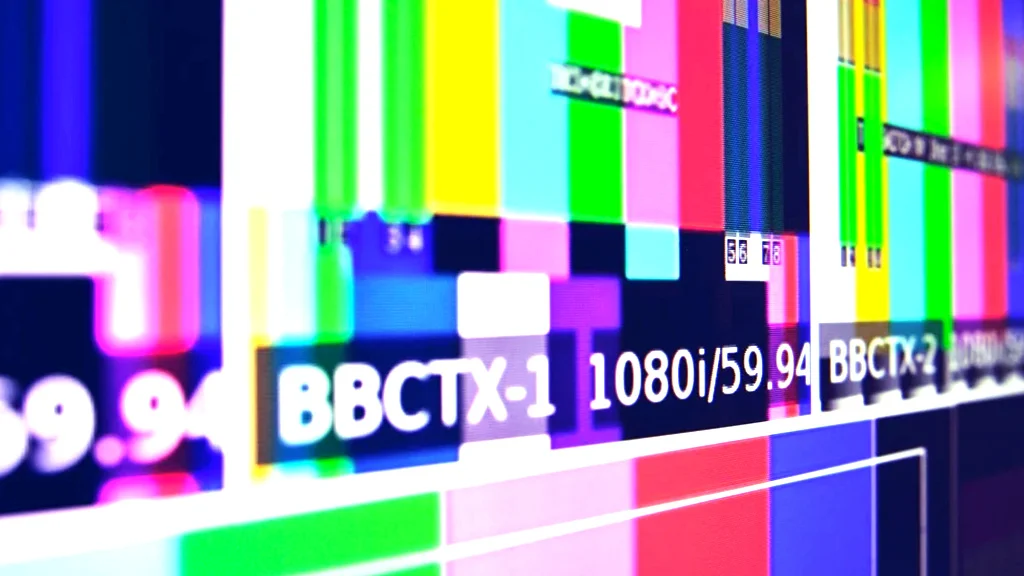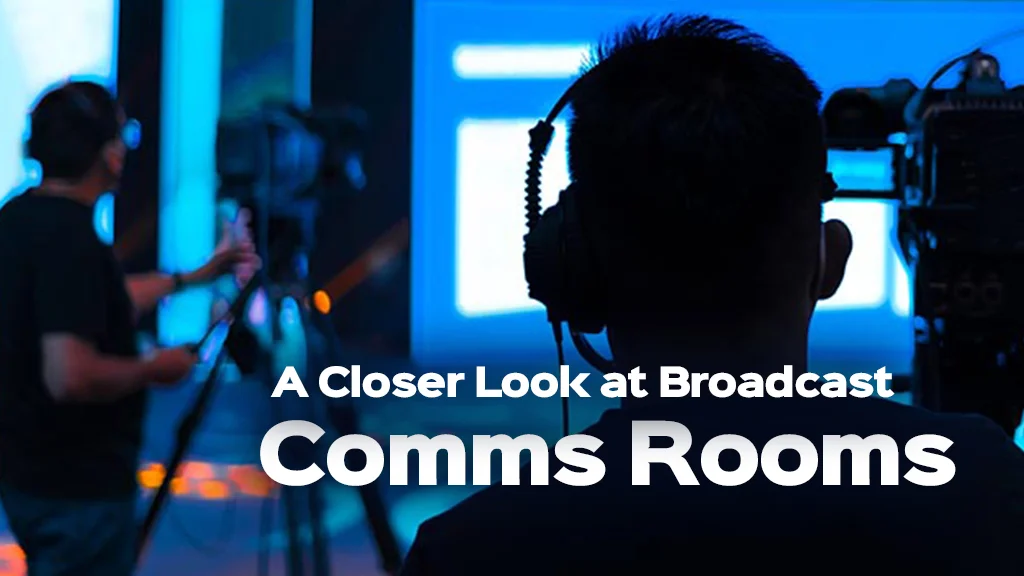
- Article
Master Control Room, the Beating Heart of Broadcast Centers
Each live broadcast center or TV site may have multiple production, news, OB and probably other special studios like weather forecasting. All the incoming or outgoing audio-video signals for these locations are monitored, technically controlled and processed in Master Control Room (MCR) and then distributed among appropriate or desired destinations.
Broadcast MCR acts as the beating heart of an operational hub, providing centralized on-air signal management for the command and control of the supported channels by their consolidated facilities for regional, national or international broadcasting. It ensures that all signals are properly routed and all technical standards are met to maintain the overall quality and integrity of the broadcast signals.
Often, Master control room is the endmost point before an AV signal is contributed for terrestrial transmitters, satellite providers or cablecasts.
It also plays a key role in live broadcast control, ensuring smooth transitions and signal accuracy during real-time events.
The Structure of Master Control Room
MCR in media is usually divided into two sections:
First is the machine room or rack room, formerly called Central Apparatus Room (CAR) which includes racks, video patch panels and hardware devices and the second is the operational room which is equipped with large displays and control panels of the machine room equipment.
Often, in a machine room an enterprise or mid-sized router is installed according to the number of signal inputs and outputs with some control panels including soft / touch panels or the hard ones to switch different sources for different destinations.
Another important device to monitor these I / Os is a Multiviewer processor (MIP) helping the broadcast MCR operators to monitor all the sources and destinations accurately. MIP is sometimes integrated with the main router or used as a stand-alone device.

Broadcast MCR technical equipment
Besides, other technical broadcast production equipment may be installed in machine rooms according to the broadcast workflows such as:
- Modular or stand-alone Up Down Cross convertor (UDC) to perform any required conversion between different standards, formats of AV Signals
- Audio processors such as loudness control, Embedders & de-embedders to process and control different audio channel levels and quality
- Audio Video delayers to arrange a pre-defined delay for broadcasting a live or real-time signal stream
- Plenty of Distributor modules to distribute and replicate signals for different devices
- Frame synchronizers to correct the timing of incoming sources
- Logo inserters to control channel branding of on-air signals
- Terrestrial / satellite receivers or IP-based systems to receive transmitted television programs in different platforms
- Video players and recorders as media servers or machines to record and playback video contents
- Character generators to insert appropriated logos and subtitles
- Test pattern generators (TPG) to be used as a standard video signal
- Waveform monitors and analyzers to check the quality of signal
- Logging system to record and stream the on-aired signals
- and finally, Intercom systems to communicate with staffs of other places to make necessary coordination
In some master control rooms, a vision mixer maybe used to switch between different sources and adding effects and transitions in live events. Most MCRs are also equipped with master clocks to produce the accurate time and date for the TV station.
Read also :
Latency Compensation in Broadcast Industry
Designing a Master Control Room
The overall MCR system must be designed expandable, scalable and future proof. It is expected that all the equipment has a continuous and uninterrupted operation; so room conditions and infrastructure must be thoroughly compatible with the standard environmental and electrical parameters.
Then it must be air-conditioned, dust-proof, humidity and fire protected. It is obligatory to perform a full redundant safe power system for this purpose.
In operation room, there are multiple displays in large wall-sized panels that display all the feeds from different locations (sources) and destinations. All the control panels, consoles and KVMs of the equipment mentioned in machine room are setup in here to be operated by the MCR staffs.

The Tasks Involved in a Broadcast MCR
Master control room is staffed with round-the-clock technicians and engineers to ensure continuous and seamless operation. They can perform source signal reception via video cables, satellite, fiber or IP-based video transmission systems from all over the world. These operators are responsible for monitoring the quality of the signal and execute conversions and processes if needed to meet the current specific requirements and finally perform the accurate final switches as well as checking the return signals to ensure this procedure.
In addition to the MCR’s focus on final distribution and signal compliance, the Production Control Room plays a crucial role in managing real-time production tasks, including directing live events, integrating visual effects, and coordinating multi-camera setups. These complementary control rooms are vital for maintaining the broadcast quality and operational efficiency.
A master control operator needs to communicate and coordinate effectively and cohesively with the other members of the workflow. They need to be proficient in using various software and hardware tools and have good hand-eye coordination to operate various control panels and consoles. They also need to be able to work under pressure and react quickly to change the situations in emergencies. They also need to have problem-solving skills and analytical thinking abilities to be able to troubleshoot equipment malfunctions and perform basic maintenance tasks or report any problems or issues that may arise during the broadcast operation affecting the broadcast quality or compliance.
The Functions of MCR in TV Production
The other mission is to switch video feeds between local and external locations according to the required standards of the destination to ensure the quality and accuracy of the on-air product and comply with the broadcaster’s regulations, standards and frameworks.
There could be other items as extra MCR missions as:
- To stream and record on-air signals using a logging and web streaming system to provide an archive and backup of the broadcast product to offer accessibility for defined clients.
- Adapting and responding to unexpected technical issues, such as equipment failures or power outages, to keep the broadcast running seamlessly and smoothly.
- To integrate the system solutions and control interfaces to all essential broadcast equipment, such as video router , video matrix switcher , Multiviewer , Intercom system, modular equipment and many other special devices to achieve the desired targets.









